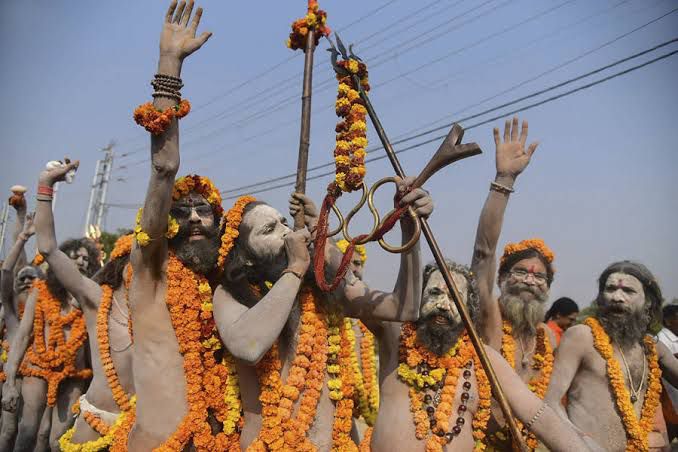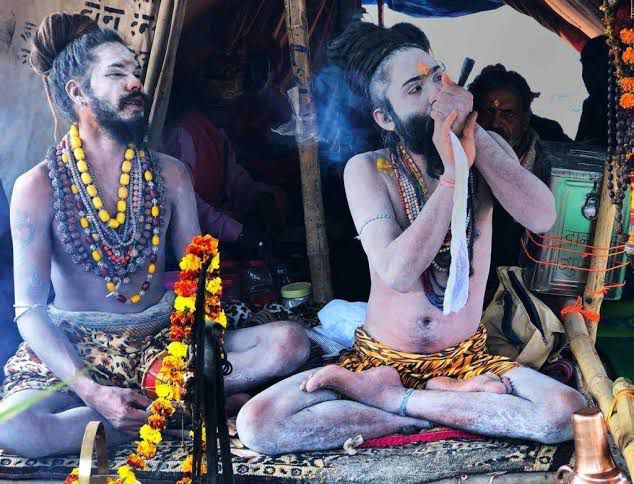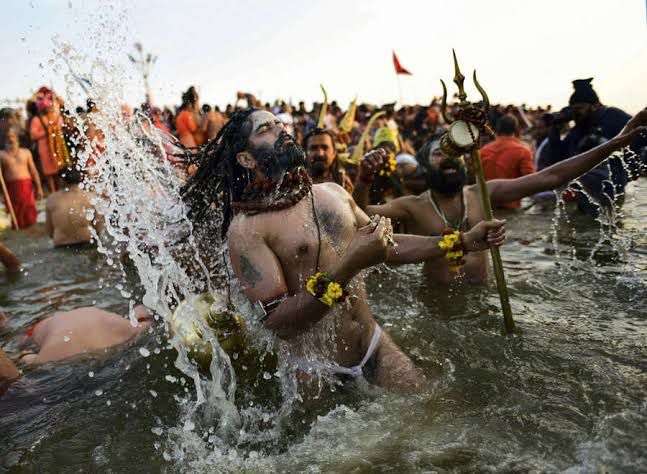
MAHAKUMBH MELA 2025
The Next Maha Kumbh Mela, set to occur in 2025 in the ancient and sacred city of Prayagraj which is not just a Kumbh Mela but MAHA KUMBH which only comes after long span of 12 years , also last Kumbh Mela which was held at Prayag raj in year 2019 was called off half way due to covid wave ,so devotees , seeker’s all over the world are so thrilled about this extra ordinary month long event which is going to be held after 12 years at holy city Prayag raj.
Kumbh Mela represents not only a pivotal event in the Hindu calendar but also a confluence of spiritual, cultural, and historical grandeur. This festival, deeply embedded in the Hindu tradition, dates back over 2000 years, making it one of the world’s oldest and most significant religious gatherings. Held every 12 years, the Maha Kumbh Mela at Prayagraj, located at the confluence of the Ganges, Yamuna, and Saraswati rivers, is not merely a geographic convergence but a spiritual one.
The significance of Prayagraj in hosting the Kumbh Mela is profound. Prayagraj, formerly known as Allahabad, is more than just a city; it’s a symbol of spiritual purification and wisdom, a place where the flow of three sacred rivers merges into a single, sanctified confluence known as Triveni Sangam.

This confluence is believed to be one of the most sacred places in Hinduism. It’s said that taking a dip in the waters of Triveni Sangam during the Kumbh Mela can wash away sins and aid in the attainment of salvation. For centuries, this city has been a beacon for spiritual liberation and enlightenment, drawing millions from across the globe seeking divine blessings and self-realization.
The Next Maha Kumbh Mela in 2025 is not just an opportunity for religious and spiritual engagement; it also presents a chance to witness the tapestry of Indian culture in its most vibrant form. The air of Prayagraj during the Kumbh Mela fills with the sounds of chants, prayers, and the ringing of temple bells.
This grand event, occurring every 12 years, is marked by an influx of millions of pilgrims to the sacred city of Prayagraj, historically known as Allahabad. Prayagraj, revered for its spiritual significance, is where the holy rivers Ganga, Yamuna, and the mythical Saraswati confluence, form the Triveni Sangam.
The choice of Prayagraj as the venue for the Maha Kumbh Mela is deeply rooted in Hindu mythology and astrology. The city’s location at the Triveni Sangam is considered one of the holiest places in Hinduism, believed to have purifying powers.
According to legend, during the cosmic event of Samudra Manthan, a few drops of the elixir of immortality (Amrit) spilt at this spot. Bathing in the sacred waters during the Kumbh Mela is thought to cleanse one’s sins and aid in achieving Moksha, the liberation from the cycle of rebirth.
The Maha Kumbh Mela at Prayagraj is a time of great spiritual fervor. Pilgrims and visitors alike can partake in various religious ceremonies, including the sacred ritual of bathing in the Sangam. This act is not just a physical cleansing but is symbolic of spiritual rebirth. The atmosphere is charged with devotion, with the air echoing with the sounds of hymns, mantras, and the ringing of temple bells.
Apart from the religious aspects, the Maha Kumbh Mela is a spectacle of Indian culture and traditions. It’s a period when the city transforms into a bustling hub of spiritual and cultural activities.
Sadhus (holy men) from different sects, each with their unique philosophies and rituals, gather to impart spiritual teachings and blessings. The Naga Sadhus, known for their severe asceticism, are a particularly intriguing sight for many visitors.
The Next Maha Kumbh Mela in 2025 is not only a spiritual journey but also an opportunity to witness and participate in a centuries-old tradition that showcases the unity in diversity of India. It is a festival that transcends religious boundaries, inviting people from all walks of life to experience the mystical confluence of faith, culture, and humanity in the holy city of Prayagraj.
This event promises to be a life-changing experience, offering moments of reflection, devotion, and a deeper understanding of one of the world’s oldest living civilizations.
Kumbh Mela: An extraordinary Spiritual Odyssey at the Sacred Rivers.
The Kumbh Mela, the largest religious gathering in the world, is a grand spectacle of faith, devotion, and spirituality, drawing millions of pilgrims from all corners of the globe. This sacred festival is celebrated at four prominent locations in India: Prayagraj (Allahabad), Haridwar, Nashik, and Ujjain. Each site holds its unique significance, history, and rituals that add to the mystical charm of the Kumbh Mela.
The festival draws millions of devotees who gather to take a dip in the holy rivers (the Ganges at Haridwar, the Godavari at Nashik, the Shipra at Ujjain, and the confluence of the Ganges, Yamuna, and Saraswati at Prayagraj) to cleanse themselves of sins and attain spiritual liberation.
The Kumbh Mela is a captivating spectacle of faith, rituals, and cultural traditions, celebrating the profound connection between humans and the divine forces of nature.

Kumbh Mela Rituals and Traditions
Kumbh Mela, the largest religious gathering on Earth, is steeped in age-old rituals and traditions that hold immense significance for millions of pilgrims. The main ritual of Kumbh Mela is the sacred bath (Snan) in the holy rivers, where devotees believe that a dip cleanses them of sins and grants spiritual liberation. The timing of the holy baths is determined astrologically and is considered highly auspicious.
Other key rituals include visiting various akharas (spiritual camps) of sadhus and saints, attending religious discourses (satsangs), performing puja and aarti on the riverbanks, and participating in processions and religious ceremonies.
Devotees also engage in meditation, prayer, and spiritual contemplation to deepen their connection with the divine. The festival celebrates the union of humanity and divinity, fostering a sense of harmony and unity among people from diverse backgrounds.
Kumbh Mela’s rich traditions and rituals symbolize the eternal cycle of life, devotion, and the profound spiritual journey towards attaining moksha (liberation).
history of the Kumbh Mela

Mythological significance of Kumbh revolves around the story of the samudra manthan or ocean churning which was done by the gods and demons to obtain the invaluable ratnas or the jewels and amrita or the nectar of immortality. The mountain Mandrachala become churning stick and the Nagraja Vasuki acted as the rope. The Lord Vishnu himself took form of Kasava or tortoise and provided base for the mountain Mandrachala with fear that it may get slipped and submerged in the ocean. The story is symbolic of the churning of our minds to go deeper into our selves from where all powers and auspicious things arise, eventually leading to liberation or immortality.
The first to emerge in this churning was a venomous poison which was consumed by the Lord Shiva who upon drinking this poison came to be called as the Nilkantha. The churning continues and emerged Kamdhenu, the Uccaishrava Jayanta, the son of Lord Indra , catching sight of the amrita kalasa or the pot filled with nectar, snatched it from the the hands of God Dhanvantari. Noticing this, Lord Shukracharya , the Guru of demons alerted and demons chased Jayanta. According to the divine counting one day of Gods is equal to the one year of mortal beings and the Jayanta kept on running for 12 days to avoid amrit kalasha to fall in the hands of demons.
The four places where Jayanta had put down the amrit kalasha in these twelve years were Haridwar, Prayag, Nashik-Trimbakeshwar and Ujjain, and at these four places at that time the sun, moon ,and planets had reached the unique astrological alignment, during which are kumbhmela is held at these places. The nectar pot was saved from the demons by God Brihaspati with the help of Sun , his son Lord Shani and Moon who saved the nectar kumbh from getting damaged.
As mentioned in the Skanda purana, kumbhmela is not just celebrated where the amrit kalasa was put down , but where the nectar had spilled along with putting down of the kalasa. It is believed that these drops gave mystical powers to these places. It is to make oneself gain on those powers that Kumbh Mela has been celebrated in each of the four places since long as one can remember.
The normal Kumbh Mela is held every 3 years, the Ardh (half) Kumbh Mela is held every six years at Haridwar and Allahabad (Prayag) while the Purna (complete) Kumbh mela takes place every twelve years, at four places Prayag (Allahabad), Haridwar, Ujjain, and Nashik, based on planetary movements. The Maha Kumbh Mela is celebrated at Prayag after 144 years (after 12 ‘Purna Kumbh Melas’).
Depending on what position the Sun, Moon, and Jupiter hold in that period in different zodiac signs, the venue for Kumbh Mela is decided.
